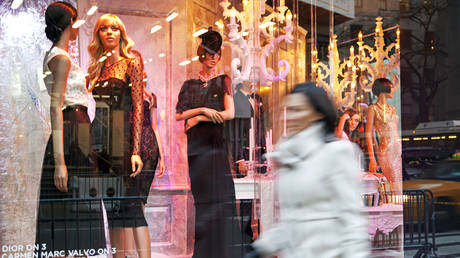Luxury Goods Market Experiences First Downturn Since 2008 Crisis, According to Report
According to consulting firm Bain & Company, consumers have been reducing their spending on luxury brands due to global uncertainty.. source:TROIB RTS

The consulting firm’s annual report, released on Wednesday in collaboration with the Italian luxury goods manufacturers’ industry association Altagamma, predicts the market for personal luxury goods will experience its first slowdown since the financial crisis, aside from the Covid lockdown period. The sector is expected to decline by 2% this year, reaching €363 billion, due to macroeconomic uncertainty and a downturn in China impacting consumer purchases.
This trend is particularly pronounced among Generation Z, or zoomers, who are facing higher costs and decreasing brand loyalty, prompting them to reduce their spending on premium brands. The report indicates that “around 50 million luxury consumers have either opted out of the luxury goods market or been forced out of it in the last two years.”
Looking ahead, overall luxury spending on items like clothing, bags, jewelry, and cosmetics is anticipated to remain steady year-on-year in 2024, approximately at €1.5 trillion.
In terms of growth categories, beauty and eyewear have shown the strongest performance. Meanwhile, jewelry has proven to be the most resilient among core luxury categories, whereas shoes and watches have faced challenges.
Bain & Company noted, “We estimate that only about a third of luxury brands will emerge from 2024 with positive growth, down from two-thirds a year earlier–many brands are set to suffer a drop in their revenue.”
In contrast to personal luxury goods, expenditures on luxury experiences such as hospitality and dining are projected to rise this year.
“To secure future growth, brands will need to rethink their luxury equations, re-establishing creativity and blending old and new playbooks,” said Federica Levato, a partner at Bain & Company.
The report also highlighted that emerging markets present new growth opportunities, particularly in Latin America, India, Southeast Asia, and Africa. These regions are expected to add more than 50 million upper-middle-class luxury consumers by 2030.
Ian Smith for TROIB News
Find more stories on Business, Economy and Finance in TROIB business












